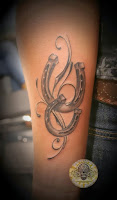At back to school night the beginning of the year Samantha’s fifth grade teacher said budget cuts had prevented the school from being able to hire a teacher to do advanced math instruction for the kids that needed additional challenges.
He asked for a parent volunteer to work with those kids. I have never before found a way to balance regularly volunteering at my children’s schools while working full time – limited my volunteer activities to attending parties, chaperoning field trips, etc. But this seemed SO important.
I told my new boss I would to work come an hour later on those days and volunteered myself and my very smart teenage boy. Twice a week we go in and teach about nine kids concepts they wouldn’t normally be exposed to until later. Charlie’s school starts an hour after Samantha’s, so he had to give up an hour of sleep on those days – which he has been wonderful about. He also has a knack for making tough concepts much more accessible then I do for the 5th graders.
It is really one of the highlights of my week
Today was especially fun – very active and hands on. Our text this week wanted to introduce pi (π - I spent at least 5 minutes trying to figure out how to blog the symbol for π). When I learned π, I remember a lot of emphasis on memorizing it to some number digits (3.14159265..), but not a great understanding of what it was – the relationship between the circumference (that’s like perimeter kids, but for circles) and diameter (a line between two edges of a circle that goes through the center point).
So today, we paired up the kids and put ‘circles’ all over a table – compact mirrors, DVDs, rolls of masking tape, a tambourine*, hoola hoops, a symbol from a drumset*, and beer coasters from the KLCC Microbrew festival (ok, slightly poor judgment there, but hey a circle is a circle). I then had them measure the circumference and diameter of each circle thingy using ribbon and a tape measure and divide. In some cases they got exactly 3.14, and in all cases they numbers rounded to 3 as the nearest whole number. We then talked about how if you have a perfect circle and accurate measurement this calculation will always result in the same number: π . It was a noisy lesson, but much more fun than solving problems worksheets. We’ll do those on Thursday.
*Note to self: When trying to instruct preteens in ANYTHING in the future. Noise makers don’t necessarily add to the learning atmosphere.
He asked for a parent volunteer to work with those kids. I have never before found a way to balance regularly volunteering at my children’s schools while working full time – limited my volunteer activities to attending parties, chaperoning field trips, etc. But this seemed SO important.
I told my new boss I would to work come an hour later on those days and volunteered myself and my very smart teenage boy. Twice a week we go in and teach about nine kids concepts they wouldn’t normally be exposed to until later. Charlie’s school starts an hour after Samantha’s, so he had to give up an hour of sleep on those days – which he has been wonderful about. He also has a knack for making tough concepts much more accessible then I do for the 5th graders.
It is really one of the highlights of my week
Today was especially fun – very active and hands on. Our text this week wanted to introduce pi (π - I spent at least 5 minutes trying to figure out how to blog the symbol for π). When I learned π, I remember a lot of emphasis on memorizing it to some number digits (3.14159265..), but not a great understanding of what it was – the relationship between the circumference (that’s like perimeter kids, but for circles) and diameter (a line between two edges of a circle that goes through the center point).
So today, we paired up the kids and put ‘circles’ all over a table – compact mirrors, DVDs, rolls of masking tape, a tambourine*, hoola hoops, a symbol from a drumset*, and beer coasters from the KLCC Microbrew festival (ok, slightly poor judgment there, but hey a circle is a circle). I then had them measure the circumference and diameter of each circle thingy using ribbon and a tape measure and divide. In some cases they got exactly 3.14, and in all cases they numbers rounded to 3 as the nearest whole number. We then talked about how if you have a perfect circle and accurate measurement this calculation will always result in the same number: π . It was a noisy lesson, but much more fun than solving problems worksheets. We’ll do those on Thursday.
*Note to self: When trying to instruct preteens in ANYTHING in the future. Noise makers don’t necessarily add to the learning atmosphere.

Comments